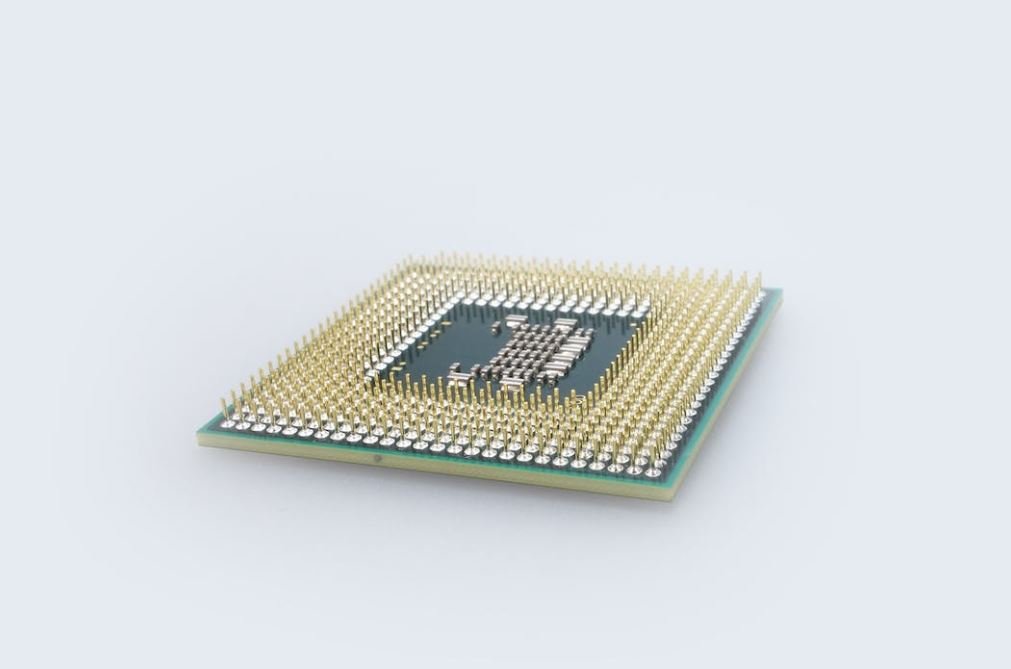How Does OpenAI Work?
OpenAI is an artificial intelligence research laboratory that aims to promote and develop friendly AI for the benefit of humanity. OpenAI’s primary focus is on building safe and beneficial artificial general intelligence (AGI). AGI refers to highly autonomous systems that outperform humans at most economically valuable work. OpenAI works on various projects, such as language models, robotics, and reinforcement learning, with the goal of advancing AI technology.
Key Takeaways:
- OpenAI is an AI research laboratory working on building safe and beneficial AI.
- The focus is on developing artificial general intelligence (AGI) that surpasses human capabilities.
- Projects include language models, robotics, and reinforcement learning.
One of the notable achievements of OpenAI is the development of advanced language models like GPT-3. GPT-3 (Generative Pre-trained Transformer 3) is a powerful AI model that uses deep learning techniques to generate human-like text based on given prompts. It has been trained on a vast amount of data from the internet, making it capable of understanding and generating coherent and contextually relevant responses. With its size of 175 billion parameters, GPT-3 can perform a wide range of tasks, including language translation, content creation, and even code writing.
Language models like GPT-3 have the potential to revolutionize various industries by automating content generation and providing valuable insights.
In addition to language models, OpenAI also focuses on robotics research. By combining AI algorithms with physical systems, OpenAI aims to develop robots that can perform complex tasks and interact with their environment effectively. This research touches on areas like computer vision, manipulation, and locomotion. OpenAI emphasizes the importance of safe and reliable robots that can adapt to various scenarios without causing harm.
OpenAI’s Robotics Research Projects:
- Rubik’s Cube Solving Robot
- Dactyl: Robotic Hand Manipulation
- Simulated Humanoid
| Project | Focus Area |
|---|---|
| Language Models | Natural Language Processing |
| Robotics | AI-Enabled Physical Systems |
| Reinforcement Learning | Machine Learning Algorithms |
Reinforcement learning is another important area of OpenAI’s research. This technique involves training AI agents to make decisions and take actions in a given environment based on trial and error. Through repeated interactions, the agents learn to optimize their behavior and achieve specific goals. OpenAI has developed reinforcement learning algorithms like Proximal Policy Optimization (PPO) that have shown impressive results in various domains, including playing complex games like Dota 2.
Reinforcement learning enables AI agents to learn and improve through experience, much like humans do.
The ethos of OpenAI revolves around the belief in ensuring safety and responsible deployment of AI technology. OpenAI actively promotes cooperation and collaboration among different organizations in the AI community to address potential risks and challenges associated with AI development. The focus on transparency and research publications allows OpenAI to contribute to the global understanding of AI and its impact on society.
OpenAI’s Principles:
- Safety: Building AI systems that are safe and beneficial for humanity.
- Cooperative Orientation: Working with other research and policy institutions to tackle global challenges.
- Long-term Safety: Commitment to research towards making AGI safe and advocating for its adoption.
| Principle | Description |
|---|---|
| Safety | Development of AI systems that prioritize safety and consider human well-being. |
| Cooperative Orientation | Collaboration with other institutions to address global challenges collectively. |
| Long-term Safety | Research efforts focused on ensuring AGI is safe, and encouraging its responsible adoption. |
In conclusion, OpenAI is a leading research laboratory that focuses on building safe and beneficial AI, with a strong emphasis on artificial general intelligence, language models, robotics, reinforcement learning, and collaboration for long-term safety. Through its innovative projects and principles, OpenAI aims to advance the field of AI and contribute positively to the future of humanity.

Common Misconceptions
Misconception 1: OpenAI is completely autonomous
Some people mistakenly believe that OpenAI operates entirely independently without any human intervention. However, the reality is that OpenAI’s technology is developed and guided by human engineers and researchers.
- OpenAI relies on human supervision to shape and fine-tune its algorithms.
- Human input is important to ensure AI models align with ethical guidelines and societal values.
- The development of OpenAI’s technology involves collaborative efforts between human experts and AI systems.
Misconception 2: OpenAI has access to all information on the internet
Another common misconception is that OpenAI has unlimited access to all the information available on the internet. However, this is not the case as OpenAI’s models are trained on specific datasets and are not omniscient.
- OpenAI’s models are trained on carefully selected data to avoid bias and misinformation.
- They do not have access to real-time information or data beyond what has been included during training.
- OpenAI’s models have limitations and may not know or understand everything.
Misconception 3: OpenAI is infallible and error-proof
Many people assume that OpenAI’s systems are perfect and free from errors. However, like any technology, OpenAI’s models are prone to mistakes and can produce incorrect or biased results.
- OpenAI acknowledges that errors can occur and continuously works to improve its models.
- Bias in AI systems is an ongoing challenge that OpenAI actively addresses through rigorous testing and feedback loops.
- Users should exercise caution and critical thinking when relying on OpenAI-generated content.
Misconception 4: OpenAI intends to replace human intelligence
Some people fear that OpenAI’s advancements aim to replace human intelligence completely. However, OpenAI’s mission is to enhance human capabilities rather than supersede them.
- OpenAI’s goal is to create technology that collaborates with humans, augmenting their abilities rather than replacing them.
- OpenAI emphasizes the importance of human oversight and involvement to avoid undue concentration of power and ensure responsible AI deployment.
- The intention is to develop AI systems that work alongside humans, fostering a symbiotic relationship.
Misconception 5: OpenAI is only focused on profit and commercial interests
Another misconception is that OpenAI prioritizes profit and commercial interests over societal benefit. In reality, OpenAI is committed to ensuring broad benefits and using any influence over AI’s deployment for the collective good.
- OpenAI’s primary fiduciary duty is to humanity, and it strives to minimize conflicts of interest.
- The organization actively cooperates with other research and policy institutions to address global challenges associated with AI.
- OpenAI has dedicated efforts to enable access to and benefits from its technology across different sectors.

Overview of OpenAI Workforce
OpenAI is an artificial intelligence research laboratory that aims to ensure that artificial general intelligence (AGI) benefits all of humanity. One of the important components of OpenAI’s work is its workforce, which consists of a diverse group of experts in various fields. The following table presents an overview of the OpenAI workforce.
Key Achievements in AGI Research
OpenAI has made significant advancements in the field of artificial general intelligence. The table below highlights some of the key achievements of OpenAI in AGI research.
Demographics of OpenAI Researchers
OpenAI fosters a diverse and inclusive research environment. The following table provides an overview of the demographics of OpenAI researchers, demonstrating the diversity and global representation within the organization.
Successful AGI Applications
OpenAI’s work has led to the development of various applications powered by artificial general intelligence. The table below showcases some successful applications of AGI.
Impact of OpenAI’s Research on Industries
OpenAI’s research has not only advanced artificial general intelligence but has also influenced numerous industries. The table below demonstrates the impact of OpenAI’s work on different sectors.
Educational Background of OpenAI Researchers
The educational background of OpenAI researchers is diverse and encompasses a wide range of fields. The following table provides insights into the educational qualifications of OpenAI researchers.
Research Contributions by OpenAI
OpenAI has contributed significantly to the scientific community through its research publications and collaborations. The table below highlights notable research contributions made by OpenAI.
Collaborations and Partnerships
OpenAI believes in the power of collaboration and actively engages in partnerships to advance AGI research. The following table showcases some of OpenAI’s collaborations and partnerships.
OpenAI’s Investment in Ethical AI
OpenAI is committed to ensuring that AGI is developed and used for the benefit of all humanity. The table below illustrates OpenAI’s investment in ethical AI practices and initiatives.
Future Vision for OpenAI
OpenAI has a clear vision for the future, striving to create safe and beneficial AGI. The table below presents OpenAI‘s future goals and aspirations.
OpenAI’s groundbreaking work in the field of artificial general intelligence has revolutionized the way we approach and understand AI. With a diverse and talented workforce, numerous achievements, and a commitment to ethical practices, OpenAI continues to push the boundaries of AGI research. Through collaborations and partnerships, OpenAI aims to create a future where AGI benefits all of humanity, making significant advancements across various industries. With its clear vision and dedication to safety, OpenAI sets the stage for a transformative and exciting future of artificial intelligence.
Frequently Asked Questions
How does OpenAI train its models?
OpenAI trains its models using an approach called reinforcement learning from human feedback. The models are initially supervised by human trainers who provide demonstrations and rank different responses. This data is then used to train the models through a combination of imitation learning and reinforcement learning methods.
What kind of data is used to train OpenAI models?
OpenAI models are trained using a large dataset from the Internet, including text from books, articles, and websites. This diverse range of data helps the models to learn various linguistic patterns and facts about the world.
What are the limitations of OpenAI’s language models?
While OpenAI’s language models are impressive, they have certain limitations. For instance, the models might generate plausible-sounding but incorrect or nonsensical answers. They can also be sensitive to slight changes in input phrasing, leading to different responses. Additionally, the models may sometimes exhibit biased behavior or respond to harmful instructions.
How does OpenAI address bias in its models?
OpenAI acknowledges the presence of bias in AI systems and is actively working to reduce both glaring and subtle biases in how their models respond. They are invested in ongoing research and engineering to improve the policies and guidelines provided to trainers to ensure a more ethically aligned behavior of the models.
Are OpenAI models biased in their responses?
OpenAI models aim to prioritize user-defined values and avoid taking positions on controversial topics. However, biases can still emerge from imperfections in the training process or underlying data. OpenAI is committed to minimizing this bias and addressing any concerns raised by users.
Can OpenAI models be fine-tuned or customized for specific tasks?
OpenAI allows users to customize the behavior of their language models through a fine-tuning process. This enables users to modify the models for specific applications while still benefiting from OpenAI’s initial pre-training process.
How does OpenAI ensure the safety and responsible use of its models?
OpenAI follows strict safety guidelines and conducts a rigorous safety and policy review process. They are actively researching ways to improve the interpretability and controllability of their models. Additionally, OpenAI encourages feedback from users to identify and mitigate any risks associated with the deployment of these models.
What measures does OpenAI take to prevent misuse of its models?
OpenAI is committed to ensuring that its technology is used responsibly. They actively investigate and address misuse of their models, including potential harms or malicious use. OpenAI also employs strong partnership agreements and terms of service to govern the use of their models.
How can OpenAI’s models contribute to research and development?
OpenAI’s models can be a valuable asset in accelerating research and development across various domains. They can assist in tasks like drafting papers, writing code, answering questions, and more. Researchers can benefit from the capabilities of OpenAI models to advance their work and make new discoveries.
Can individuals or organizations access OpenAI’s models and APIs?
Yes, OpenAI provides an API that allows individuals and organizations to access and use their language models. Detailed information regarding accessing the models and pricing can be found on OpenAI’s official website.




